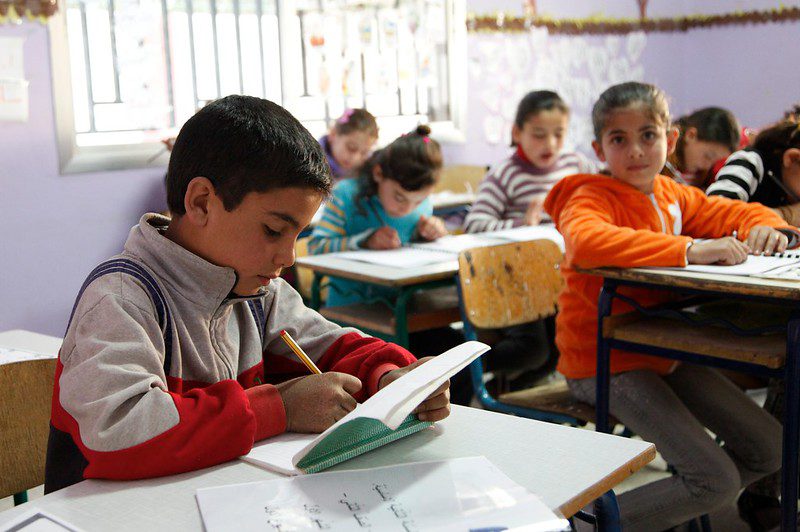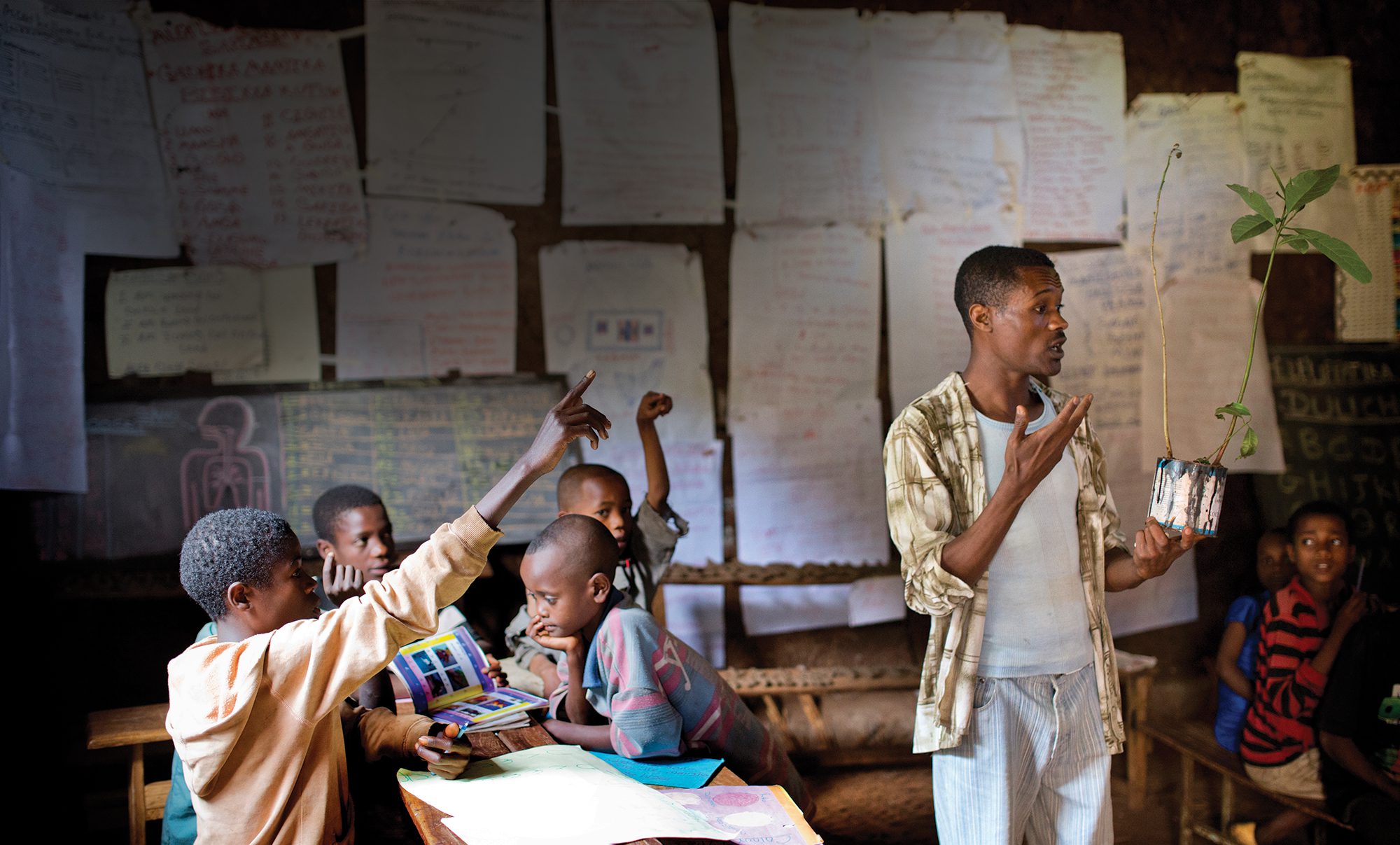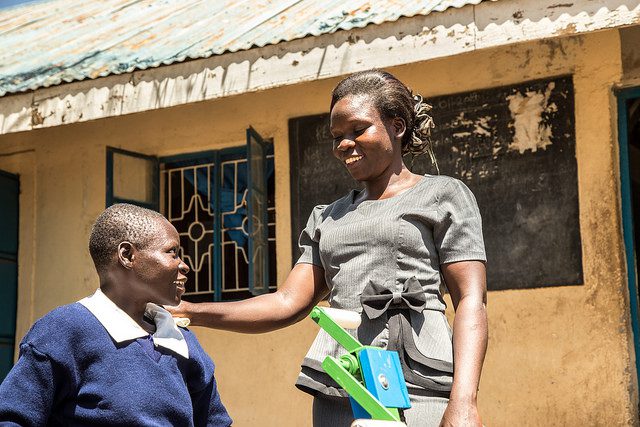This blog was written by Jo Kelcey and Samira Chatila, Centre for Lebanese Studies, Lebanese American University. For the 2019 UKFIET conference, 17 individuals, including Samira, were provided with bursaries to assist them to participate and present at the conference. The researchers were asked to write a short piece about their research or experience.
How has the arrival of large numbers of refugee students affected host state education systems? That’s a question the Centre for Lebanese Studies (CLS) has been asking. Since 2011, over a million Syrian refugees have arrived in Lebanon: half a million of whom are school-age children. In keeping with UNHCR’s Global Education Strategy, the Government of Lebanon allows Syrian children registered with UNHCR to attend public schools where they study the Lebanese curriculum and sit for Lebanese exams.
The decision to integrate refugee students to attend host state schools was a notable policy shift for UNHCR, which had until 2012, promoted teaching refugees their home state curriculum in separately administered schools.[1] It was also a shift for the Government of Lebanon, which hosts Palestinian refugees, many of whom learn in schools run by the United Nations Relief and Works Agency for Palestine Refugees in the Near East – UNRWA. This change in policy was intended to help address the shockingly low rates of access to quality education among refugee populations by making schools more accessible and available. But as we’ve observed, it has produced mixed results.
Nine years into the Syrian conflict and only 45 percent of school-age refugees in Lebanon (around 220,000 Syrian children) actually attend public schools and more than half of school age Syrian refugee children in the country remain out of school. What’s more, the majority of Syrian students (71 percent of those who attend public schools) are accommodated through a second shift where they are “temporally segregated” from their Lebanese peers. This approach offers few opportunities for Lebanese and Syrian students to interact, learn from and, support each other, with potentially negative implications for social cohesion between Syrian and Lebanese communities.
But even before Syrian refugees arrived in Lebanon, the public education system was struggling. As CLS staff have written about elsewhere, the Lebanese public sector is beset by low enrolment (only 30 percent of school-age Lebanese actually attend public schools, with the majority of children enrolled in the private system), serious inefficiencies and, unfulfilled promises of curriculum reform, even though great potential was ascribed to the sector in the wake of Lebanon’s long civil war (1975–1990). But crises are also opportunities for positive change, not least owing to the financial and technical support and partnerships offered by donors and UN agencies. With this in mind we have been examining how the Lebanese education system has shaped and, been shaped, by the policy shift towards integration.
Research findings
Our findings – based on a detailed analysis of international and national policies, extensive interviews and observational data – suggest that an opportunity has been missed. Although Syrian refugees are allowed to attend Lebanese public schools, the Government maintains their presence is temporary. Reflecting this, its policy-making on refugee related issues tends to be ad hoc and reactive. This tendency is compounded by the short-term funding, high staff turnover and emergency orientation of international humanitarian response, which tends to eschew the type of long-term investments that are needed to address underlying education inequities. In its place we observed a proliferation of local level bureaucracy, creating barriers for refugee enrolment and making it hard for school principals to know how to meaningfully integrate refugee students. Instead, principals and teachers tended to rationalise the segregation of Syrians into a second shift, viewing them as the lowest priority within a struggling system for which they already had low expectations. In short, attempts to integrate Syrian refugees into Lebanese public schools have failed to overcome the existing weaknesses of the Lebanese education system and may even be perpetuating them.
What could have been done differently?
Rather than suspend national priorities to deal with the intake of refugees, we argue that these priorities should have been front and centre in the response. And more attention should have been paid to the intersections between education access and quality from the outset of the crisis. Initially characterised by a concern with access to education, the response is now more focused on the quality of education that is offered. But access and quality are inextricably linked: although students and their families have high aspirations and hope for the future, the perceptions that the Lebanese public sector provides low-quality education has curtailed the expectations of policy makers, principals and teachers towards both Syrian and Lebanese students. In other words, by failing to address perceptions about quality, unhelpful, if not harmful attitudes have been reproduced and the accommodation of Syrian refugees into afternoon shifts further fragments an already weak public sector.
[1] Initially UNHCR referred to this approach as one of “integration”. However, this proved too politically sensitive in many host states (including Lebanon) and the term “inclusion” is now preferred.





